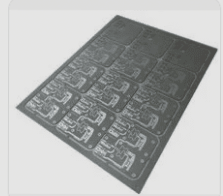A Hybrid PCB is a type of printed circuit board that integrates two or more different substrate materials, such as FR4 and Polyimide, FR4 and Ceramic, FR4 and Aluminum base, etc. Hybrid PCBs are increasingly favored in industries like aerospace, defense, medical, and telecommunications, where factors like reliability, thermal management, and miniaturization are of paramount importance.
Advantages of Hybrid PCB
By combining different substrate materials, hybrid PCBs provide several significant advantages, including:
First, Enhanced performance. The use of multiple substrate materials allows for optimized performance and efficiency in various aspects of the circuit, such as thermal management, signal transmission, and power distribution.
Second, Greater design flexibility. As electronic devices continue to shrink, there is an increasing demand for compact and efficient PCBs. Hybrid PCBs can meet this demand by offering greater flexibility in design and substrate material choice. For example, a hybrid PCB can incorporate metal layers for electromagnetic interference (EMI) shielding or utilize ceramic materials for high-frequency applications.
Third, Multifunctionality. Hybrid PCBs can be designed to serve multiple functions within a single board, simplifying overall system design. By integrating different types of circuits—such as high-frequency and power circuits—on a single board, the need for multiple boards and connectors can be eliminated. This not only reduces the overall size and weight of the device but also improves reliability.
Considerations When Designing Hybrid PCBs
There are several important factors designers should take into account.
First, Material selection. Different materials have distinct properties, such as dielectric constant, surface roughness, and thickness, which can significantly affect the electrical characteristics of interconnects. Parameters like impedance, signal integrity, and crosstalk are all crucial and can be influenced by these material properties. To ensure optimal material choice, it is essential to design interconnects with impedance matching and signal integrity in mind.
Second, Thermal management. Hybrid PCBs often operate at high power densities, which can generate substantial heat. Any fluctuations in temperature could damage components or permanently deform the board, leading to issues like hot spots or thermal runaway. To prevent such problems, thermal management should be an integral part of the design process. This might involve incorporating thermal vias, heatsinks, or other cooling solutions.
If you have any questions regarding PCBs or PCBA, feel free to contact us at info@wellcircuits.com.




